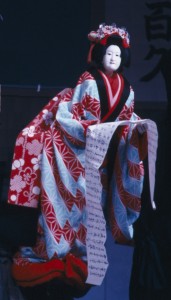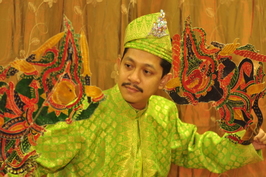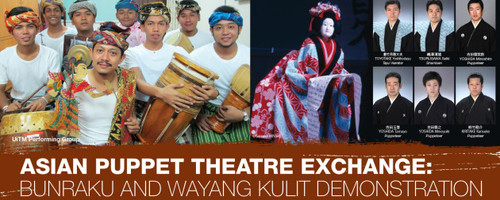Performing arts enthusiasts have the rare opportunity to pick up the finer points of traditional Asian puppetry from the rising stars of Bunraku and dalang muda Kamrulbahri Hussin in a special combined demonstration at the Royal Museum on 28 August.
Six young members of Japan?s Bunraku scene will be on hand to guide participants through the nuances of the classical theatre art. They currently headline the Asian Puppet Theatre Exchange, which sees them embark on a three-city tour of Bangkok, Kuala Lumpur and Hanoi to conduct joint short courses and trade industry know-how with their stage counterparts.
The second half of the demonstration shifts the focus to Wayang Kulit, otherwise known as shadow puppetry. The session will be piloted by Kamrulbahri Hussin, a well-respected name in the traditional Malay music scene.
The demonstration will conclude in a collective performance by both groups.
This event is presented by the Japan Foundation Kuala Lumpur as one of many ongoing efforts by the Japan Foundation Asia Center to enhance intercultural exchanges between Southeast Asian countries in the years leading up the 2020 Olympic and Paralympic Games.
Date & Time: 28th August 2014, 8:00 p.m. ? 10:00 p.m.
Venue: Royal Museum, Jalan Istana, Istana Negara, 50460 Kuala Lumpur.
Participation: Free
Register here.
We have reopened registration for the demonstration on Eventbrite due to high public demand. In case all the spaces have been taken up again, you may still join the workshop. However, bear in mind that you may receive an obscured view of the stage. To those who successfully registered, please print your Eventbrite tickets and present them to us at the door.
 What is Bunraku?
What is Bunraku?
Ranking with Noh and Kabuki as one of Japan?s foremost stage arts, the Ningyo Johruri Bunraku puppet theatre is a blend of sung narrative, instrumental accompaniment and puppet drama. This theatrical form emerged during the early Edo period (ca. 1600) when puppetry was coupled with Johruri, a popular fifteenth-century narrative genre. The plots related in this new form of puppet theatre are derived from two principal sources: historical plays set in feudal times (Jidaimono) and contemporary dramas exploring the conflict between affairs of the heart and social obligation (Sewamono). Approximately 160 works out of the 700 plays written during the Edo period have remained in today?s repertory. Nowadays, it attracts numerous young performers, and the aesthetic qualities and dramatic content of the plays continue to appeal to modern audiences.
<br clear=all>
Kamrulbahri Hussin
 Mohd. Kamrulbahri Hussin, or more affectionately known as Kamrul Hussin, is an award-winning classical Malay musician. A native of Kelantan, Kamrul was exposed to the state?s myriad performing arts through his father, a seasoned exponent of Main Peteri. He has lent his services as musical director to both modern and traditional theatre productions, as well as contributing music to feature films. He has also performed with many local and international artistes such as
Mohd. Kamrulbahri Hussin, or more affectionately known as Kamrul Hussin, is an award-winning classical Malay musician. A native of Kelantan, Kamrul was exposed to the state?s myriad performing arts through his father, a seasoned exponent of Main Peteri. He has lent his services as musical director to both modern and traditional theatre productions, as well as contributing music to feature films. He has also performed with many local and international artistes such as
Siti Nurhaliza, M. Nasir, Sadao Watanabe and Michael & Victor. Kamrul currently lectures at Universiti Teknologi MARA (UiTM), where he was named a ?Distinguished Creative Scholar?.








